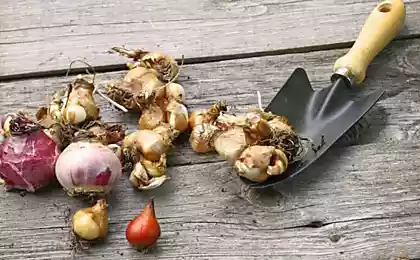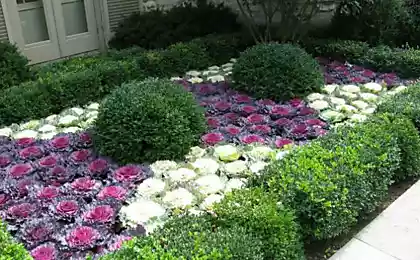500
How to plant and care for perennials

Perennial flowers live in the garden long bloom earlier than others, and they are usually quite hardy. While perennials generally require less care than annuals.
Perennials you can grow from seed to get your seedlings, and you can purchase rhizomes or have an adult plant in a container. Fairly common is to take any plant from the neighbors as part of the rhizome with shoots.
Soil preparation before planting perennials:
You need to carefully dig the soil and make organic and mineral fertilizers.
Irises are unpretentious, but they need sufficient watering and periodic "landing"
Fertilizer required to depending on the needs of the specific plant that you plan to put on this place. For silnoroslye and climbing plants provision of the fertilizer is lower because you need to ensure flowering. These plants have large amounts of fertilizers can cause the development of foliage at the expense of flowering.
Depending on the needs of specific plants, of necessity, have to adjust the composition of the soil (for example, if in some places the soil is too acidic, you need to proizvestkovat).
Before planting, wait for 2-3 days so the soil settles.
How to plant perennials:
The best time for planting perennial flowers – from approximately 25 April to 20 may and from 15 August to 5 September. Pre-dig planting holes the depth of which corresponds to the size of the roots of plants intended for planting.
For an hour before planting seedlings abundantly pour and pour the hole with water. Place the plant roots into the hole, sprinkle with soil and well consolidated. If your plant container, pre-obodrite roots "Carnevino". When planting plants grown in the hole be sure to put the peg of the garter or flower support. Planted in the plant liberally pour.
Lupin is a "perennial weed", so he adapted to life in any environment
General rules for the care perennials:
Hoeing, fertilizing, watering is a very important event for perennials, although they are not as often as annuals. To loosen, however, you can not all and not always, it is best to mulch as many of the perennials, the roots lie very close. But need frequent watering, especially before flowering and during flowering. Also required regular watering in the heat and drought. Water the plants only need warm water, so water directly from the well cannot be used. The best option is to lower the pump into the barrel with warm water. And don't water jet, it's better to put on the hose sprayer. When you fertilize flowers, it is better to combine this exercise with the watering.
Perennials for the first time feed in the spring after the snow melts, they planted seedlings and adult plants within 2 weeks after the landing, and then during the formation of buds, during flowering and after flowering. Spring fertilizing produce organic fertilizers, and since the period of flowering and mineral. After 20 September, the perennials already not fed.
Truly "folk" flower, win-win decoration of any flower beds. Daisy long blooming and long vase life
Preparing perennials for the winter:
Perennials in late autumn should be cut as low as possible to the flower beds before the winter period was clean tidy, otherwise you'll have to prune in the spring, especially when the roads every day. Dry foliage of perennials is a shelter for mice. In addition, the perennials will start" very soon, and in the spring pruning of dead parts have a chance to damage young shoots. Cut all perennials, except for those that were planted this fall. The new planting, and especially thermophilic and rare perennials for the winter after cutting the insulated one or two layers were lutrasil, cutting out from it the rectangles of the desired size. Necessarily harboring plants, "Alpines". Twigs from frost protects bad and attract mice. Cover with perennial flowers removed after the snow melts.
Source: domashniy.ru/



















